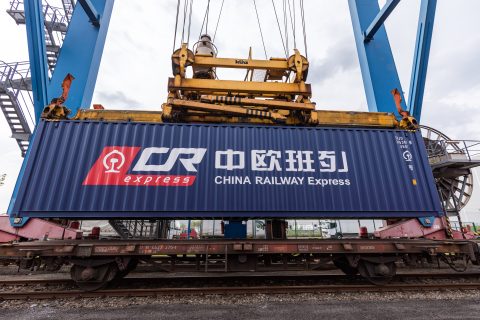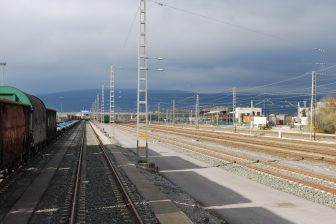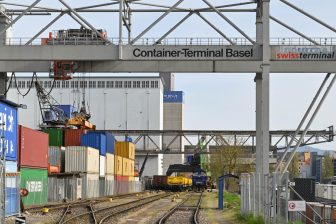
Second test shipment of wine by rail from Germany to China
A container with wine was loaded on a train departing Duisburg on July 28th, to cover a distance of 11,400 kilometres, cross six countries and arrive in Shanghai around August 21st. It is the second test shipment of this sort, carried out by JF Hillebrand to explore the options of transporting its spirits on the route to China via rail.
“As wines and spirits specialists we wanted to test the effects of such a long journey by rail on the packaging (breakages, labels) and on the wines themselves”, said Ann Carmichael, Organisation and Methods Director of JF Hillebrand.
Challenges
After crossing the German border, the container is transported through Poland, Belarus, Russia and Kazakhstan to reach its final destination in China. The containers are exposed to tough climatic conditions and movements comparable to a rollercoaster trip. These are only a few of the challenges of the rail shipment.
“There are also material and administrative constraints to consider. As the train crosses six different countries, the track gauges can be different from one country to another requiring a change of train. It also means different time zones generating communication delays, different international transport conventions for the railway bill and documents exclusively written in Chinese, Russian or English”, explained the company.
Incentives
The company is however keen on exploring the possibilities of the transport mode for its products. As Carmichael explained: “There was more and more interest in the route to China via rail, partly because of a lack of availability of equipment and space in addition to general congestion on sea freight routes. And partly because of a lot of media attention to the rail service itself.”
Jannson Chan, Area Director Greater China believes the connection complements sea and air freight. “With 22 days (station to station) transit time, rail transport is much faster than sea transport, which generally takes between 35 to 42 days to China. Rail is more expensive than sea, but is cost-efficient when compared to air cargo.
“This means this solution is optimally suited for hauling high-value products like beer, wine and spirits, especially when these need to be at final destination as quick as possible but not at any cost. This is especially true when shipping to and from Central/Western and Northeast China. Rail then has a significant lead time advantage compared to traditional transport modes such as ocean freight.
Test results
Based on the first test results, the company has been able to determine how exposed the container is to humidity or thermal shocks. The temperatures varied from -2°C at its lowest to 58°C at its highest. Left without suitable protection, extreme climatic conditions can cause damage to the packaging, to the cork’s integrity and the wine’s chemical and sensorial trend, the company explained.
In order to protect the container it had been fitted with a protective liner foil system, the VinLiner. This significantly reduced fluctuations in the container, with temperatures varying from 9°C at its lowest to 32°C at its highest. At the highest temperature, the wine within the bottles was between 25/29°C, said Pierre Corvisier, Director of Service Development and Innovation.
G-forces data loggers (longitudinal, vertical, transverse) measured the level of movement between wagons. This was in particular strong in Kazakhstan and China, which could be the result of uneven rail tracks. It reached a maximum of 2G, but with suitable protection of the bottles inside the container no damage to the bottles or packaging was observed.
Next step
There is still much to be done and to look forward to, the company said. “Rail tracks can be improved to ensure smoother shipments, there will be additional railheads in Europe (Bordeaux, Paris, Lyon, Milan and London) and increased reefer availability on more routes. There will be more capacity on rail services, and further development of our predictive risk management solution providing visibility on temperatures on specific routes at any time of year.”
Chan added: “The current opportunities are still limited but the situation is evolving quickly, it has already developed very fast these last few years. In the next 12 to 18 months the coverage in China will be wider and the growing capacity on rail services will mean that costs should have decreased making this solution more attractive for the Chinese Market.”
Read more:





